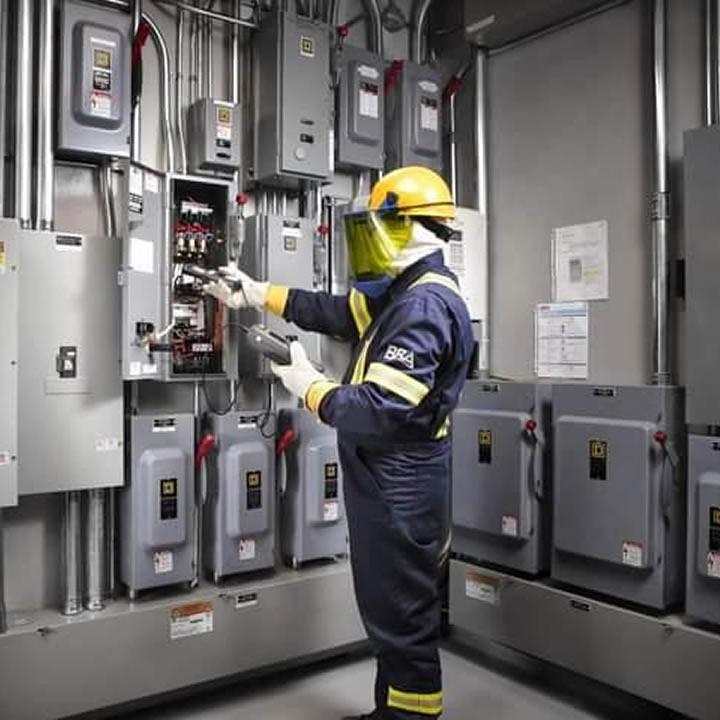Arc flash risk assessment plays a crucial role in providing electrical safety in various industries. By identifying potential risks and taking necessary safety measures, the analysis of electrical arc flash helps to minimize accidents and injuries at work.
In this article, we will consider the 10 main ways this analysis improves safety by creating a safe and secure work environment.
What Does an Arc Flash Hazard Analysis Determine?
Arc flash hazard analysis is used to determine the risks associated with arc flashes in various electrical systems. The main tasks of this analysis are:
- Identification of potential hazards;
- Assessing the severity of arc flashes;
- Mitigation recommendations.
Key elements assessed in the arc flash risk analysis include electrical system configuration, fault current levels, protective devices, and equipment marking requirements.
The Importance of Arc Flash Hazard Analysis
Arc flash hazard analysis is essential to prevent accidents and save lives.
By identifying potential hazards, you can:
- Define requirements for personal protective equipment for personnel from arc flash burns and other types of arc flash injuries.
- Establish appropriate safety procedures that will help reduce the risk of arc flashes, ensuring the safety of workers, and preventing life-threatening injuries.
Arc Flash Hazard Analysis Requirements
Is Arc Flash Study Required by Code?
This study is necessary in accordance with various regulatory and industry standards governing electrical safety. For example, this is stated in the NFPA 70E, a standard of the National Fire Protection Association.
Compliance with these requirements provides:
- Identification of potential hazards
- Risk assessment
- Establishing security procedures
- Prevention of electrical accidents
- Defining Safe Working Distances
- Staff awareness raising
- Better equipment maintenance
- Selection of suitable personal protective equipment
- Reducing downtime
- Developing a safety culture
In turn, failure to comply with these requirements can have serious consequences, including injury or death, legal liability, fines, damage to reputation, and increased insurance costs.
Who Can Perform an Arc Flash Hazard Analysis?
The arc flash hazard analysis should be performed by qualified electrical engineers acknowledged by the engineering association. When choosing a service provider, it is important to consider its experience, qualifications, references, and compliance with standards such as NFPA 70E and IEEE 1584.
In order not to spend much time searching for such a company, we recommend contacting Leaf Electrical Safety. These experts know how to perform arc flash hazard analysis so that your employees and equipment are not affected by the arc flash!
How Often is an Arc Flash Hazard Analysis Required?
The frequency of the analysis may vary according to industry, jurisdiction, and specific circumstances. Usually, it should be done every 5 years or whenever any changes occur in the enterprise affecting its electrical systems.
Arc Flash Analysis Cost
The cost of analysis may vary depending on such factors as:
- Size and complexity of the analyzed electrical system;
- Number of devices and equipment involved;
- Availability of relevant documentation;
- Level of access;
- Necessary security measures, etc.
Send a request to Leaf Electrical Safety and you will calculate the cost of such services taking into account all features of your company.

